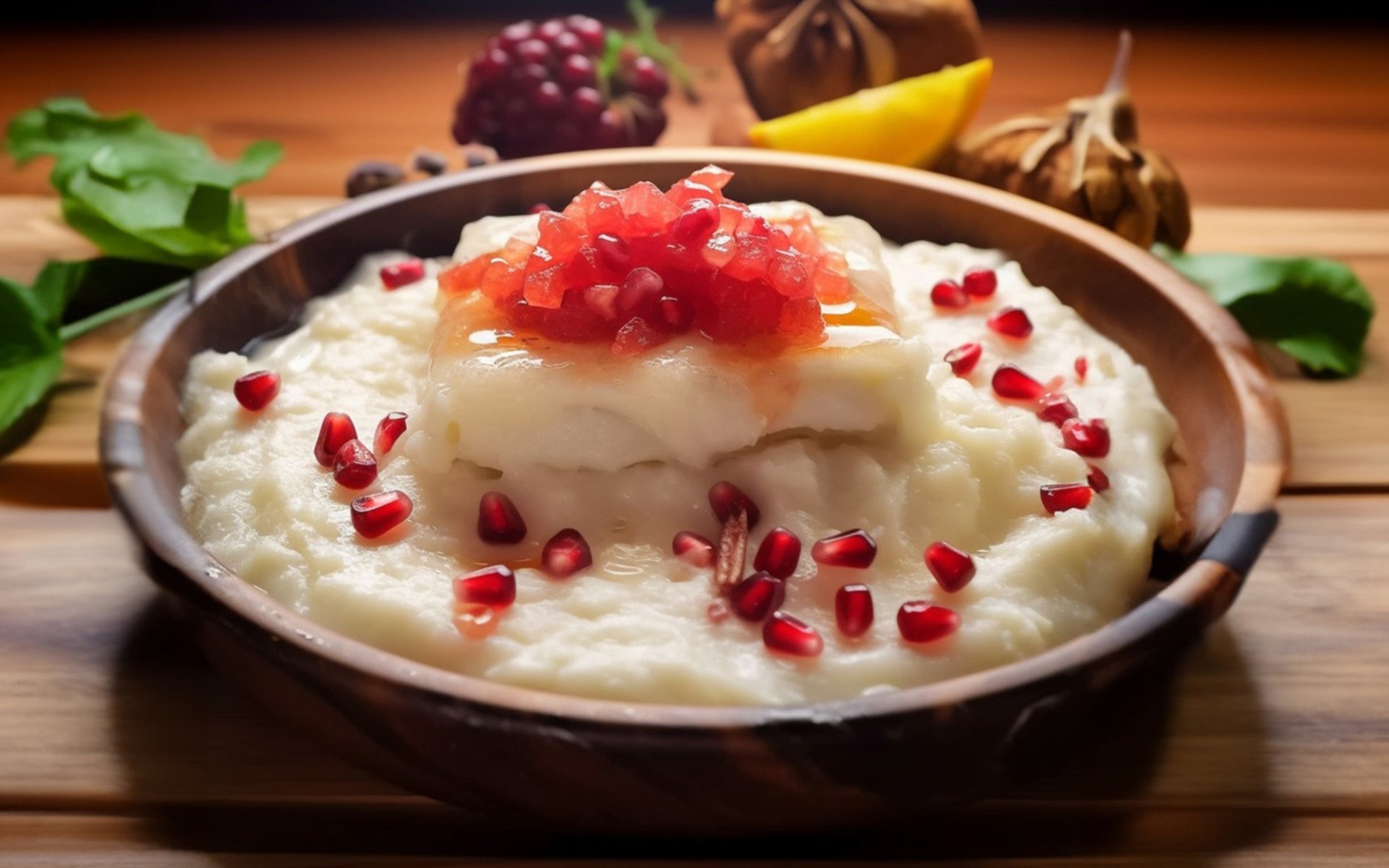Güllaç

Güllaç is a traditional Turkish dessert with a long history dating back to the Ottoman Empire in the 15th century. It represents a culinary tradition that has been passed down for centuries. The history of Güllaç is as intricate as the layers of this delicate pastry, made from thin sheets of dough and walnuts, soaked in warm, sweet milk, and adorned with fresh pomegranate seeds, creating a refined and uniquely charming flavor.
Origins in the Ottoman Palace
The historical roots of Güllaç trace back to the prosperous Ottoman Empire. Legend has it that Güllaç was first prepared in the kitchens of the Ottoman palace, specifically for the Sultan and the royal family during the fasting month of Ramadan. From there, its popularity gradually spread beyond the palace walls to the common people, becoming a significant and widely recognized part of Turkish culinary culture.
During the Ottoman Empire's flourishing period, Güllaç was primarily reserved for special occasions and palace feasts, especially during Ramadan, where it played a crucial role as a dish for breaking the Islamic fast.
Meaning of the Name and Key Ingredients
The name Güllaç is derived from Turkish and holds an interesting meaning: rose. This aptly refers to a unique key ingredient, rosewater, which is essential in its preparation. The main components of Güllaç include Güllaç sheets (typically made from thinly rolled wheat and corn starch, then dried in the sun, allowing for long-term storage), milk, sugar, and, of course, rosewater to impart its distinctive aroma.
One of Güllaç's most distinguishing features is how these delicate sheets are immersed in a warm mixture of milk, sugar, and rosewater. This allows them to absorb the flavors, becoming soft, fragrant, and delightfully sweet. While soaking, the Güllaç sheets are layered with a mixture of ground nuts, such as pistachios or walnuts. The dessert is then left to set in layers, typically chilled, before being served, often garnished with finely ground pistachios or fresh rose petals, giving it a beautiful and elegant appearance.
The use of rosewater in Güllaç not only adds a prominent and unique aroma but also pays homage to ancient culinary traditions that often incorporated fragrant elements into their dishes.
Güllaç and the Culture of Sharing in Ramadan
During the holy month of Ramadan, Turkish people often prepare larger quantities of Güllaç specifically for sharing with neighbors and family members. It is believed that sharing Güllaç promotes happy coexistence and unity during this sacred month, emphasizing the generosity and warm hospitality that are characteristic of Turkish culture.
Typically, Güllaç is enjoyed after a day of fasting, once the sun has set (during Iftar, the evening meal for breaking the fast). This is because Güllaç is a refreshingly sweet dish that provides energy to the body without being too heavy. It allows the body to slowly and gently absorb nutrients and replenish energy. For these reasons, the Turkish people revere Güllaç as the true Queen of Ramadan Desserts.
Contemporary Applications and Future Evolution
However, while Güllaç is particularly popular during Ramadan, it is by no means exclusive to this period. In fact, Turkish people enjoy this dessert throughout the year for various special occasions, such as weddings, engagements, and other celebrations.
Over time, Güllaç recipes have evolved to accommodate changing tastes and preferences. While traditional methods remain popular and cherished, today there are various forms of Güllaç available. New ingredients, such as pomegranate syrup, orange blossom water, or vanilla, may be incorporated to add new dimensions of flavor and aroma, ensuring that Güllaç remains an alluring and delicious dessert, representing a vibrant part of Turkey's culinary heritage.


